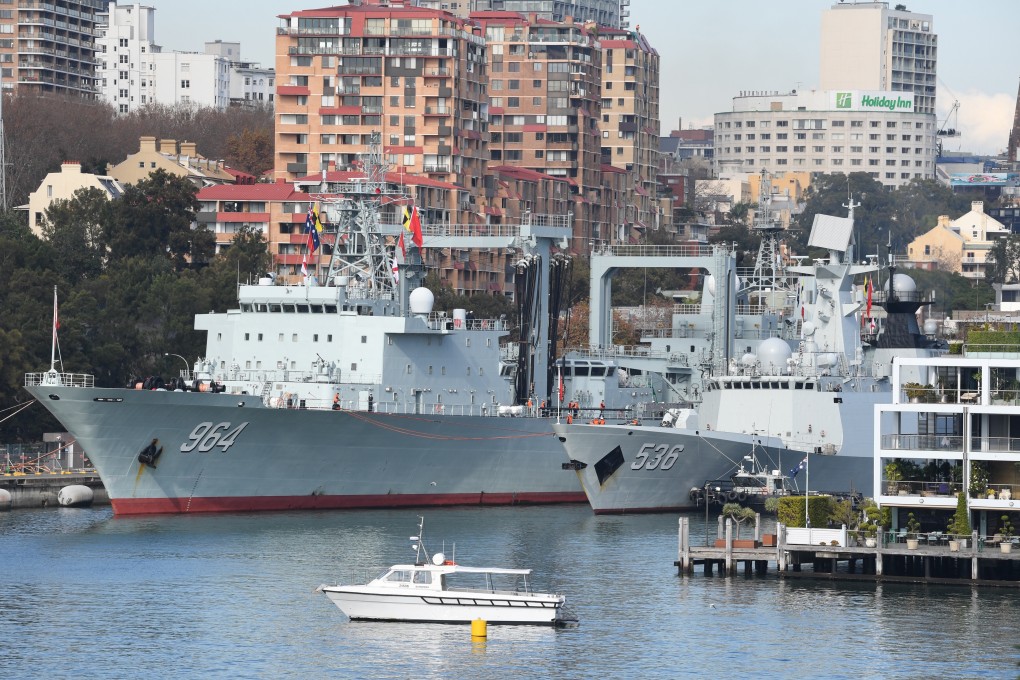Advertisement
Chinese warships in Sydney: a surprise for the Australian public, and a show of strength from Beijing?
- Prime Minister Scott Morrison says the visit was reciprocal, while to experts it showed China’s ability to carry out naval operations globally
- The flotilla has also been described as a ‘public relations disaster’, since it followed other controversies involving Australian and Chinese vessels
Reading Time:4 minutes
Why you can trust SCMP

The docking of three Chinese warships in Sydney for a publicly unannounced stopover on Monday set off a flurry of speculation about Beijing’s intentions amid rising anxiety about Chinese influence in the southern Pacific.
The visit by a Chinese frigate, auxiliary replenishment ship and amphibious vessel – with some 700 sailors in total – caught social media users and academics by surprise, with some questioning the visit’s timing and why the government had not given them advance notice.
It’s turning into a public relations disaster for China
“The People’s Liberation Army (PLA) Navy visit might have been intended as an act of diplomacy but it’s turning into a public relations disaster for China,” said John Fitzgerald, a China scholar at Swinburne University in Melbourne, noting that it followed a number of controversies involving Australian and Chinese vessels.
Advertisement
The stopover, as the ships returned from the Middle East, came days after reports emerged that an Australian navy vessel in the South China Sea was tailed by the Chinese navy and Australian navy pilots had been targeted by lasers from Chinese fishing vessels.
Rory Medcalf, the head of Australian National University’s National Security College, said on Twitter that Beijing appeared to be making “a serious show of presence in the South Pacific”.
Advertisement
Medcalf said previous visits by Chinese navy ships typically involved a single vessel and that Sydney was not a convenient stopover for vessels returning from the Gulf of Aden, the body of water bordered by Yemen and Somalia.
Advertisement
Select Voice
Choose your listening speed
Get through articles 2x faster
1.25x
250 WPM
Slow
Average
Fast
1.25x